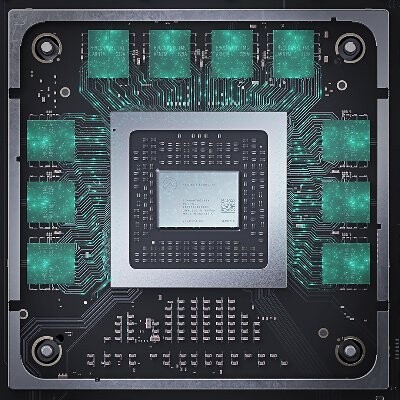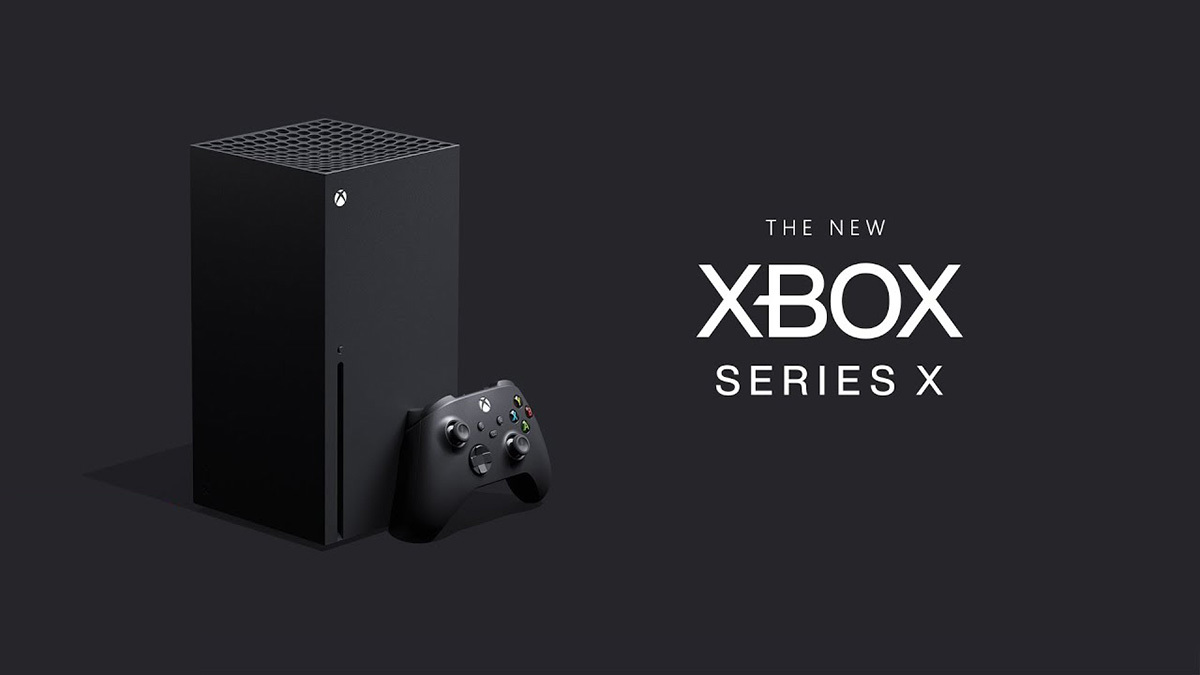A few days ago, we reported that Phile Spencer, the head of Xbox, released a post on Xbox’s blog. He talked about the future of gaming on Xbox and how the Series X will not only improve the gaming experience but also enhance the overall home entertainment system. We know that Microsoft has been pushing for an all-digital future of gaming, they also announced a digital-only version of Xbox One S. Moreover, the idea of game streaming was also put forward by Xbox.
Now Microsoft is gearing up to release the new Xbox called Series X. Rumors claim that series X will have two consoles. One all-out version which is going be roughly twice as fast as the Xbox One X, while the other moderate version will have roughly 15.x performance boost over the One X. Both Microsoft and Sony had announced that the future of console gaming is not only based on the GPU enhancements but also CPU improvements. The most significant technological hindrance of the 8th generation consoles was the CPU power. The custom Jaguar CPUs used in every base and enhanced console by Sony and Xbox was not enough to compliment the GPU power as result developers, and gamers had to face issues like screen tearing and variable framerates.
ALSO READ: Phil Spencer talks about the future of gaming through Xbox series X
However, both console makers have announced that the processors in the PlayStation 5 and Xbox Series X will be based on the Zen 2.0 architecture with SMT. The consoles will be released sometime in the holiday season. We have had a bunch of leaks for both consoles, but in the case of Xbox, the time for speculation is over as Xbox has revealed the official specifications of the Series X console.
A few months back, the design & shape of the Series X console was revealed, and now we have the detailed internal specifications too. Xbox invited some of the industry influencers to demonstrate the processing power of the new consoles. These include Austin Evens and folks from Digital Foundry, which is a subsidiary of Eurogamer. Additionally, Xbox released another blog post that details the critical specifications down the clock speeds of the components. So, without further wait, let us dive into the specifications is to see the weight of the 4k60 and 4k120 claims.
Xbox Series X SoC
The Project Scarlet SoC will be one of the most ambitious and technologically superior works from both Microsoft and AMD. The SoC is fabricated on TSMC’s enhanced 7nm manufacturing node, which means we will see improvements in both performance and power consumption frontiers. The processor has a 320mm2 die, which a lot smaller than previously expected as it houses both the CPU and the GPU.
Zen 2.0 CPU
As mentioned earlier, the CPU is based on the Zen 2.0 architecture with tweaks from Xbox so that it is better suited for the intents and purposes of the Series X console. We are getting 8 cores and 16 threads clocked at 3.8GHz. The core features two Quad-core clusters which are joined together to form an Octa-core processor. Out of these eight cores, one core (two threads) is reserved for the operating system and the front end of the console.
The 3.8GHz clock speed is only achievable when the hyper-threading or SMT is locked. So, Microsoft is giving an option to developers to have processors at 3.6GHz with the added benefits of SMT or use the full potential of the eight cores at 3.8GHz but without SMT. It will be the developer’s discretion on what to choose depending upon the game.
While talking to the Digital foundry, the lead system architect at Xbox Andrew Goosen said, “From a game developer’s perspective, we expect a lot of them to actually stick with the eight cores because their current games are running with the distribution often set to seven cores and seven worker threads.” He further explained that the developers would try to stick with the cores running at their full potential with SMT disabled at the start. As technology progresses, we will see a gradual shift towards the use of SMT.

Lastly, Microsoft and AMD worked on the EEC error on the GDDR6 memory, since GDDR6 memory does not support EEC error correction. AMD built the EEC error encoder that works alongside the virtualization so that there are no penalties while dealing with EEC errors. It will be beneficial for the xCloud, too, since Mircosoft will update the hardware from Xbox One S to Xbox Series X on its cloud servers.
To flaunt the actual performance of the processor, Xbox released a video that shows that Series X is able to play four different games at a suspended state at the same time.
RDNA based GPU
GPU has the central stage in any console. It has been the case with the 8th generation of consoles, with CPU being the limitation. The focus from GPU will not change in the coming generation too, which is evident since the games are getting more and more complex. Microsoft aims to deliver 12TFLOPS of compute performance via 52 Compute units. The APU actually has 56 CUs, which may lead to another “enhanced console” variant in the future (who knows?). Still, digital foundry reports that these four disabled CUs are present to increase the production yield. The GPU core will run at 1825MHz, the boost and gaming clock speeds are not going to be available as Microsoft is trying to ensure constant frequency over the board.
While talking about the compute performance, Andrew Goosen said, “12 TFLOPs was our goal from the very beginning. We wanted a minimum doubling of performance over Xbox One X to support our 4K60 and 120 targets. And we wanted that doubling to apply uniformly to all games. To achieve this, we set a target of 2x the raw TFLOPs of performance, knowing that architectural improvements would make the typical effective performance much higher than 2x. We set our goal as a doubling of raw TFLOPs of performance before architectural improvements were even considered – for a few reasons. Principally, it defined an audacious target for power consumption and so defined our whole system architecture.”
He also explained that in the early stages, it is difficult to assume that we have actually achieved what we wanted for the system. Even though they decided to double down every key aspect of the architecture, only time will tell whether the Xbox Series X actually has a 2x performance boost over the One X.
Since there is not a single game out there developed, especially for the new console, it is difficult for Microsoft to demonstrate the performance boost in graphics. Eurogamer reports that Xbox had developed a demonstration of Gears 5, the latest game in the Gears of War lineup. The developers prepared the presentation only in two weeks in which they optimized the Unreal Engine 4 to work on the new architecture. The unoptimized, two-week-old port, along with the new software ray Tracing support, was rivaling the performance of an RTX 2080, which is a feat in itself for a console that will be priced much lower than the GPU (not the computer mind you) in competition.

New storage system
As games are getting bigger and more complex, a fast and big storage system is needed so that our gaming needs are met. The 8th gen consoles were shipped with a slow 500GB HDD. These consoles could only store 5,6 games before the storage runs out, and the loading times were a big hindrance in the overall experience too.
Xbox has come up with a solution. The Series X will ship with 1TB of custom NVMe SSD. As demonstrated by the following video, the same game requires 40 more seconds to load on an Xbox One X compared to the new Xbox Series X. It is a substantial improvement since loading times have started to become a hassle.
To cater to the capacity problems, Microsoft has come up with a solution. In a partnership with Seagate, Xbox has developed an expansion card that will provide an extra 1TB of storage. Microsoft has also announced that the larger sized expansions cards will be available in the future.
Real-time Ray Tracing
When Phil Spencer initially specifications of the Xbox Series X console, he announced that the console would support hardware-driven support for Ray Tracing. It was a peculiar announcement since AMD has no hardware support for Ray Tracing as opposed to Nvidia, which has RT cores specifically designed for Ray Tracing.
The RDNA 2 architecture to be released for desktops later has architectural support for DXR 1.1 standard similar to the RT cores found in the RTX graphics cards. Without the hardware support, Ray Tracing would have required 13TFLOPS of compute performance alone from the shader processors. Andrew Goosen says, “For the Series X, this work is offloaded onto dedicated hardware, and the shader can continue to run in parallel with full performance. In other words, Series X can effectively tap the equivalent of well over 25 TFLOPs of performance while ray tracing.”
Backwards compatibility
Xbox boasts its backwards compatibility that is actually one of the most prominent features of the Xbox One lineup. Since the competition has no support for the older games, Microsoft was able to cash this feature, and it wants to retain it for the future. Series X will require emulation to run the Xbox 360 games, which will hinder the performance the same as the case with the Xbox One X. However, the games released for Xbox One can run natively on the hardware with no emulation needed.
Coupled with the Smart Delivery feature, gamers would not need to buy the same game twice. They can just run their old games on the new hardware to get the performance upgrades of the new console. Not to mention you will be able to play all of these games at a native 4K resolution.


